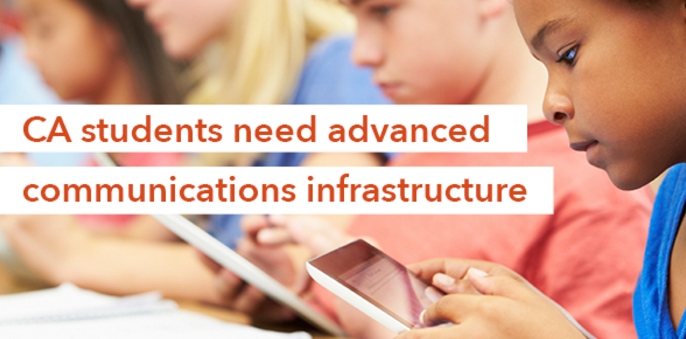In 1996, movie rental stores were ubiquitous and cell phones were few and far between. The modern Internet was unimaginable – web pages were largely text-based and could take almost a minute to load. Google wouldn’t even exist for another two years.
We’ve made incredible strides since then, and our infrastructure has made incredible strides too. Moving forward, California must continue to support and expand the infrastructure needed for the 21st century and beyond.
Read below for just some of the ways that investments in 21st century communications infrastructure will create huge economic and social benefits for all Californians.
Education

Through both technology in the classroom and online learning opportunities, 21st century infrastructure is enhancing education. In 2013, 78 percent of students and 83 percent of faculty and staff in the US brought a personal device to the classroom and used the campus network for access to the Internet. However, more than 50 percent of teachers say that slow or unreliable Internet access presents obstacles to their use of technology in the classroom. Additionally, 63 percent of public schools in the US do not have adequate Internet infrastructure to support digital learning.
In the future, 21st century communications infrastructure will expand access to educational materials, improving student tracking and making it possible to tailor lessons to individual pupils. This type of learning also frees up time for teachers to spend more time interacting one-on-one with students.
Learn more by reading the full report
California’s Future
For California to realize the social and economic benefits of emerging and future communications technoogies, it must have an equally advanced communications infrastructure to support them. As other states and countries take steps to facilitate network upgrades, California’s communications infrastructure will need to be updated or risk being unprepared for future requirements placed upon it.
With the coming wave of digital demand, investments in 21st century infrastructure are needed to seize the benefits that new communications technologies offer. To meet these shifting demands and to keep California economically competitive, policies can be put in place that will give communications providers greater flexibility to innovate and reduce barriers to investment.